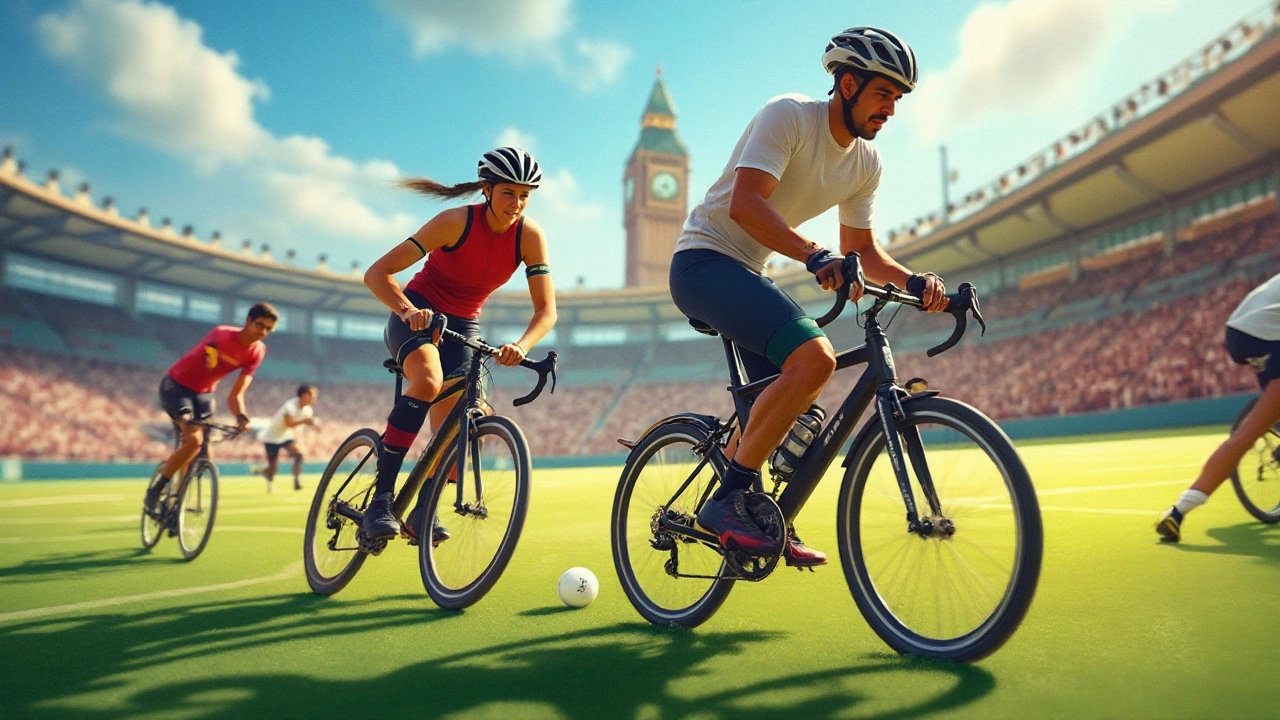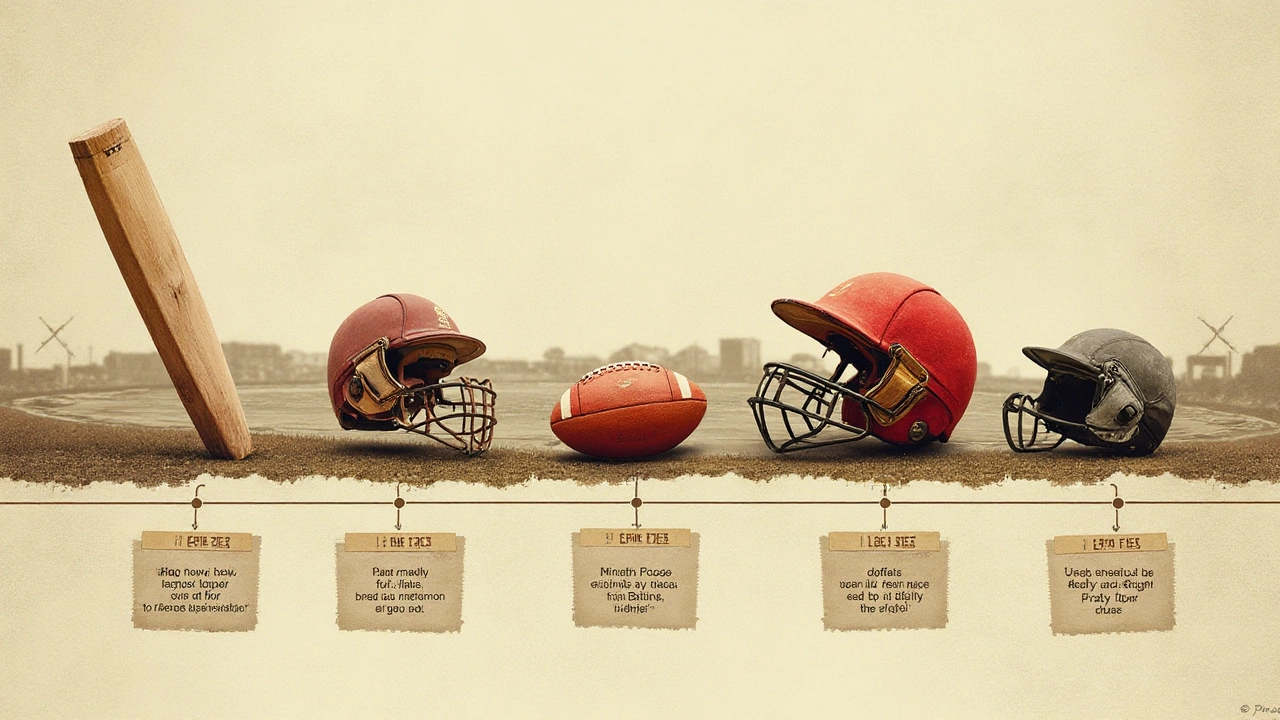
Sports Equipment February 2, 2025
Understanding Essential Sports Equipment for Performance and Safety
Sports equipment forms the backbone of any athletic endeavor, playing a crucial role in both performance and safety. Whether you're a seasoned athlete or a weekend warrior, the gear you use can make all the difference. But what qualifies as major equipment in the realm of sports, and why is it so important?
Protective gear, such as helmets and padding, is non-negotiable for safety in contact sports. Meanwhile, performance-related tools and accessories can elevate your skills and enjoyment, from lightweight running shoes to customized tennis rackets. Each piece serves a purpose and collectively, they set the stage for excellence.
For athletes and enthusiasts, choosing the right equipment is as strategic as the sport itself. Understanding your needs and aligning them with the correct tools can not only boost performance but also reduce the risk of injury. Dive into the world of sports equipment, and discover how it transforms athletic pursuits.
- The Role of Equipment in Sports
- Safety Gear Essentials
- Performance-Enhancing Tools
- Choosing the Right Equipment
The Role of Equipment in Sports
Sports equipment is much more than mere tools; it's a gateway to enhancing athletic performance and ensuring safety. This holds true across all levels of play, whether it's professional athletes competing at the highest levels or recreational players enjoying a friendly match over the weekend. The essential nature of sports gear is evident as it constitutes the support structure around which every athlete builds their performance. For instance, the importance of a well-fitted pair of shoes can't be underestimated. Shoes with good arch support and cushioning can significantly reduce the risk of injury. In sports like soccer and basketball, the difference in a player's agility and speed when wearing the right footwear is profound. This is why companies invest heavily in research to develop shoes that promise both comfort and enhanced performance.
Moreover, protective equipment like helmets, pads, and guards are uncompromising necessities in contact sports such as football, hockey, and rugby. These gears protect athletes from harmful impacts and reduce the likelihood of severe injuries. For example, in hockey, a sport known for its high-speed pucks and player collisions, helmets and padding are lifesaving. Such protective gear has evolved over decades, with advancements accommodating new understanding of player safety, like concussions. This evolution underscores the dynamic relationship between sport and science, as innovations continuously reshape the landscape of athletic gear.
It's also fascinating to observe how equipment specifically tailored for certain sports can enhance or limit performance. Take tennis rackets, for example. The choice of racket can influence a player's control, power, and overall experience of the game. Beginners usually opt for larger rackets that provide a bigger sweet spot, making it easier to hit the ball. Conversely, advanced players might prefer smaller rackets for greater control and precision. This choice directly impacts the way players interact with their sport, highlighting how integral equipment can be to personal athletic growth.
"The influence of good equipment in sports isn't just about performance—it's about confidence, assurance, and the mental edge it provides," said renowned sports psychologist Dr. Jane Harrison, during a recent seminar on sports advancements.
Beyond enhancing performance and safety, sports equipment also plays a role in the strategy of various games. Take, for instance, the different types of bats used in cricket. Fast-paced Twenty20 formats often see bats with a larger ‘sweet spot’ to help hit the ball out of the field, while in longer test matches, players prefer more balanced bats for precision. This reflects how equipment choices can be deeply intertwined with gameplay strategies, becoming an extension of an athlete's skillset and thought process.
Finally, the role of technology in the evolution of sports equipment cannot be overlooked. The introduction of high-tech fabrics in sportswear has revolutionized how athletes manage comfort and sweat during performance. Materials that wick away sweat, regulate body temperature, and reduce friction are now widely available, allowing athletes to concentrate more on their performance without distractions. Such innovations demonstrate that the advancement of sports equipment is an ongoing journey, always striving to enhance the human experience in sports.
Safety Gear Essentials
When we engage in sports, especially those with a risk of physical contact or extreme movement, the importance of safety gear cannot be overstated. Anyone who has ever watched a game of ice hockey or football knows the critical role that helmets and padding play in protecting players from injuries. These aren’t just accessories, but rather life-saving equipment designed to reduce the risk of concussions and other serious injuries. Despite the presence of safety equipment, athletes still sometimes sustain injuries, yet the statistics show a significant reduction in both severity and frequency when proper gear is used.
Athletic gear doesn't just stop at helmets; it also includes protective padding, mouthguards, and specific gear relevant to each sport. Take soccer, for instance, where shin guards are a must to prevent injuries caused by either accidental or intentional kicks. Similarly, baseball players rely on face masks to protect against fast pitches. Interestingly, a vital piece of gear often overlooked is the athletic supporter or ‘cup’, which protects sensitive areas and is essential in sports like cricket and lacrosse. This gear may vary in shape and size, but its importance is universal across high-impact sports.
Choosing the right size and fit for protective gear is another pivotal point. Ill-fitting safety equipment can be almost as dangerous as not wearing any at all. There are multiple factors to consider, including the athlete's size, the sport's nature, and specific rules that dictate which type of gear to use. Take skiing for example—a sport where the evolution of helmets has significantly decreased head injuries, yet requires precise fitting and compatibility with goggles for optimal protection. A badly-fitted helmet can impair vision and comfort, ultimately endangering the skier.
Investing in quality sports equipment is an investment in safety. Reputable brands design gear after extensive research and testing, aligning with safety standards set by organizations like ASTM International. These standards are critical because they ensure that equipment can withstand typical forces experienced during play. Not all gear is created equal; buying from reliable manufacturers assures it has passed rigorous testing. As sports professionals often say, "A safe player is a better player," because without the constant worry of injury, they can focus better on their performance.
A striking example of effective safety gear intervention comes from the world of motorsports. In Formula 1, the introduction of the HANS device—a head and neck support—has been revolutionary. It significantly decreased fatal neck injuries among drivers. This change not only demonstrates the importance of continuous innovation in safety gear but also highlights how technological advances can lead to safer sports environments overall. According to the FIA, the use of the HANS device has lowered risk of death among drivers by over 70%, proving that behind every great athlete is a suite of superb safety gear.

Performance-Enhancing Tools
When it comes to excelling in sports, performance-enhancing tools play a vital role. These are not to be confused with illegal substances or unethical methods; instead, these tools range from apparel to technology, aiding athletes in reaching their true potential. From the shoes we wear to the gear we grip, every detail counts in shaping the outcomes of games and matches. Let's explore some of the crucial elements that enhance athletic performance.
Footwear is often regarded as one of the most important aspects for performance, and for good reason. In running, a shoe with the right balance of cushioning and responsiveness can shave seconds off finishing times. Conversely, athletes playing basketball require shoes with excellent ankle support and grip to improve agility and avoid injury. It's fascinating to note that the global athletic footwear market reached an impressive $96 billion in 2023, reflecting the increasing demand and innovation in shoe technology in recent years.
Another category that deserves attention is the advancement in materials used in sports apparel and equipment. Lightweight, moisture-wicking fabrics have revolutionized athletic wear, keeping athletes cool and dry under intense conditions. Tennis players, for example, benefit greatly from rackets made with composite materials, which provide the perfect mix of strength and flexibility. The design and production of these tools involve detailed research and development efforts to understand friction, impact absorption, and aerodynamics.
Technology has also made significant strides, introducing gadgets like smartwatches and fitness trackers that monitor various parameters. For the modern athlete, data is invaluable. These gadgets not only track performance but also analyze statistics that help in adjusting training programs. With features tracking things like heart rate, calorie count, and even sleep patterns, athletes receive real-time feedback at their fingertips, allowing them to refine their training techniques.
Moreover, the application of virtual reality (VR) in sports training is becoming increasingly popular. VR simulations offer a safe space to practice skills and strategies without risking injury. For instance, football players use these virtual environments to improve play-calling and decision-making abilities. Incorporating VR in training programs reflects a broader societal shift towards embracing digital learning and skill acquisition.
Sports equipment doesn't just focus on physical help, but psychological too. The right equipment instills confidence and readiness to face challenges during the game. A well-balanced golf club or a streamlined rowing shell can feel as if they are extensions of the athlete's own body, improving performance through better ergonomics and efficiency.
As equipment becomes more sophisticated, it enables athletes to push the limits of what they can achieve. Understanding the right balance between technology assistance and ethical sportsmanship is the future of the sporting world, allowing athletes to pursue greatness with honesty and integrity. Beyond the physical equipment, a fundamental part of the sports experience is the dedication and perseverance of the athletes, proving that while tools enhance, passion drives performance.
Choosing the Right Equipment
When it comes to sports, selecting the right sports equipment is as crucial as the sport you choose to play. Not only does the proper equipment enhance your performance, but it also equipped to minimize injuries. An athlete's gear translates personal strength and strategy into effective performance, so understanding one's own style and the demands of the sport is key. In sports like tennis, the balance and tension of a racket can dramatically alter game results. For runners, shoe technology has advanced to support foot mechanics, reducing impact on joints and adding comfort for better endurance.
For beginners, it's essential to strike a balance between quality and budget. Investing in expensive gear when starting out might seem beneficial, but it’s important to understand what suits your playing style and needs first. Test out different products, perhaps borrowing gear from a friend or renting before making the commitment. In sports where safety is a key concern, such as cycling or football, protective gear like helmets or pads must meet safety standards. Look for certifications from respected bodies such as the Consumer Product Safety Commission.
Understanding the Terrain and Conditions
Sporting conditions play a major role in determining the appropriate equipment. For instance, a golfer wouldn't use the same clubs for a seaside course as they would for a mountainous one. Similarly, soccer boots with screw-in studs provide better grip on soft, muddy pitches. Assess the regular playing environment to choose equipment that will stand up to those conditions. This doesn't just ensure safety and performance—it preserves the longevity of your athletic gear.
According to renowned coach John Wooden, "The player who makes the team great, is more valuable than the great player. Choose the gear that makes you better as part of a whole." This principle applies to equipment as much as to attitude, cultivating symbiotic excellence.
Consideration of climate—is key. Clothing made from breathable fabrics aids an athlete in regulating body temperature in warm climates, while thermal wear is invaluable in colder conditions. Innovative materials such as moisture-wicking fabrics have reshaped athlete comfort and effectiveness.
Key Parameters for Evaluation
There are a few critical parameters that should guide your choice of equipment: cost, size, material, and brand reliability. While some may swear by premium brands, lesser-known manufacturers can offer surprise benefits without breaking the bank. Always read reviews and test products when possible. Sites and forums often offer genuine feedback. Weigh the pros and cons of preferred brands versus new competitors. Also, keep an eye out for technological advancements; often, new materials or designs will boast unprecedented durability or performance perks.
- Budget: Establish your price range and stick to it.
- Material: Explore various materials for durability options.
- Brand Reputation: Trust reliable brands but consider new entrants.
- Technological Advances: Embrace innovation for improved performance.
Taking the time to diligently research and choose the right equipment benefits athletes in terms of both safety and skill enhancement. A deeper understanding of one's own athletic needs and the significant role of sports equipment will contribute immeasurably to success. So, delve into the world of gear with this grounded knowledge and let it bolster your sporting adventure.




